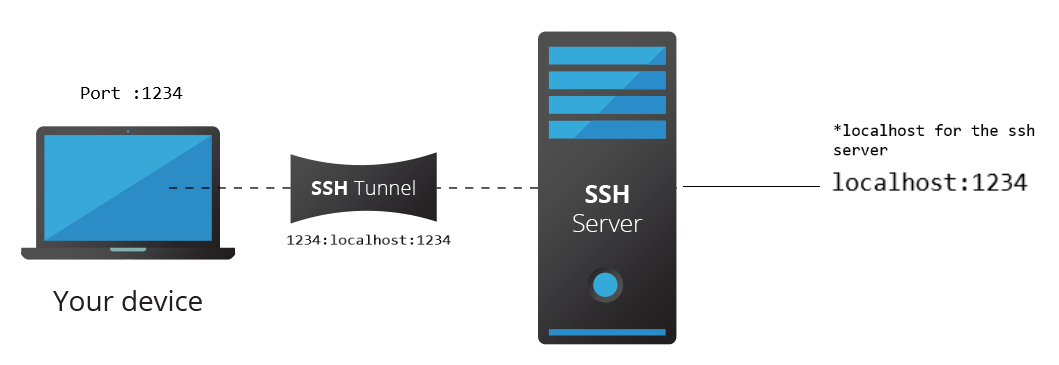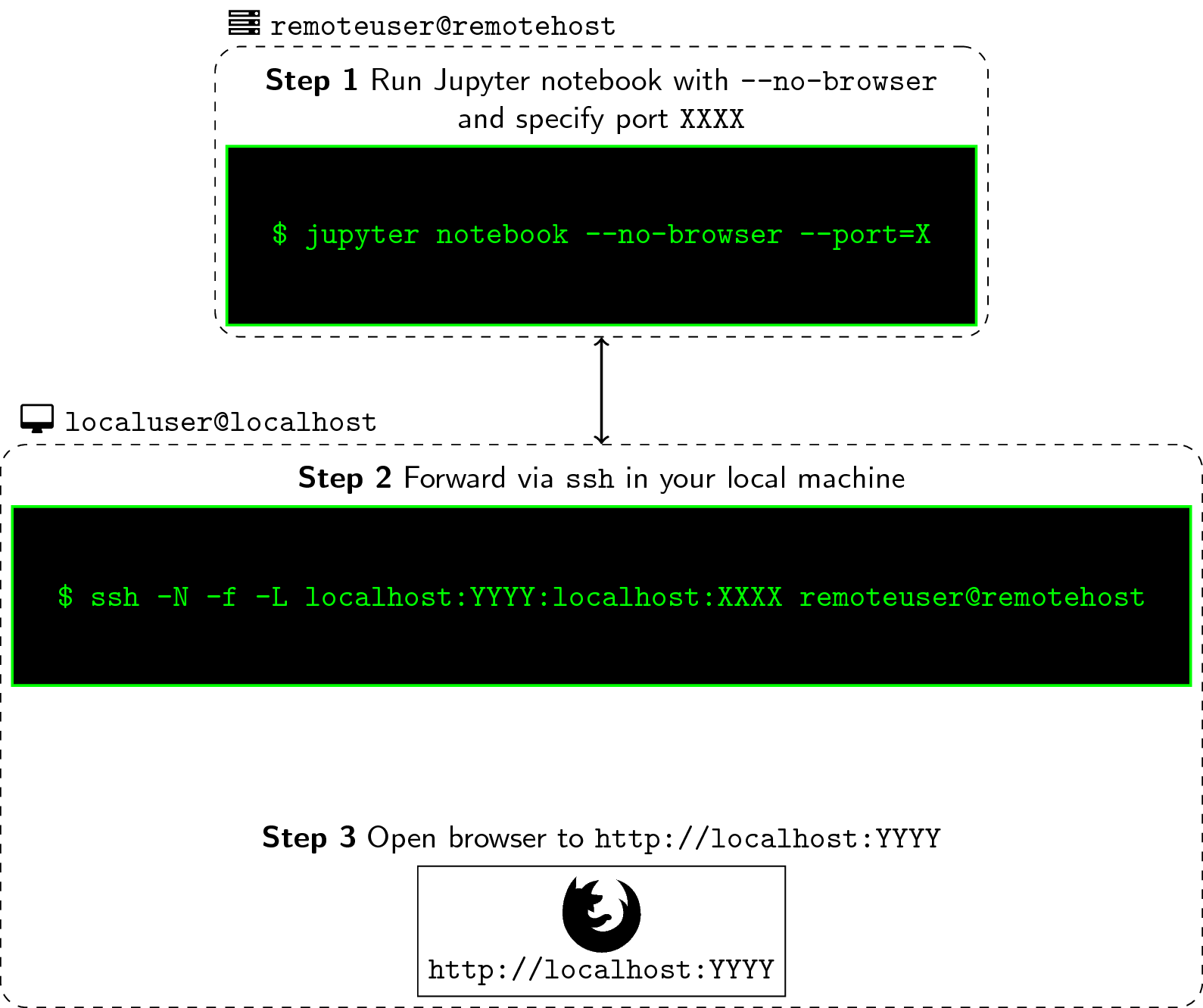Steps to Run Jupyter Notebook Remotely. Here makes the process run in the background This is necessary because we need to ssh the notebook into our local computer so dont ignore it.

How To Run Jupyter Notebooks On Remote Server Ssh By Pranav Gajjewar Medium
In most cases this is simply done via an ssh command.

. Lets run Jupyter notebook remotely with a commend below. How To Run An IPythonJupyter Notebook On A Remote. To function correctly the firewall on the computer running the jupyter notebook server must be configured to allow connections from client machines on the access port cNotebookAppport set in jupyter_notebook_configpy to allow connections to the web interface.
Log-in to your remote machine the usual way you do. However the problem with Jupyter notebook on remote server is that it is slow. You can either if you havent set a password insert the token that should be displayed a bunch of letters and numbers in the remote or if you dont see this youll need to set a password.
Run Notebook with Specified Port Number. How to run a FORTRAN program within Python from Jupyter Notebooks on remote server with SSH. Change XXXX to the port of your choice.
Step 3 SSH to the remote system and start Jupyter notebook. Optional On the remote-machine run tmux. You will see like this.
Ssh jer remote -machine. Docker run -d --rm -p 808888 -e JUPYTER_TOKENletmein jupyterminimal-notebook. Ssh into the remote-machine.
Usually the default is 8888. To connect to a remote Jupyter server. Replace the xxxxxxxx by your local ip of the jupyter server.
Login to Remote Server. We will now create a configured server because remote servers are configured servers where the local ones are the managed ones. This will prompt you to write and verify a password which.
If playback doesnt begin shortly try restarting your device. If your remote session gets disconnected tmux will keep the session running to reconnected run tmux attach. From the top tab of the ipynb file open Configure Jupyter Server.
Just a normal SSH login. James023 already stated the correct answer. Its totally the same of first way So it remains typing password.
The firewall must also allow connections from 127001 localhost on ports from 49152 to 65535. Jupyter notebook is a great tool to explore data and test codes. Jupyter-notebook And wait for minutes until.
Local button in the global Status bar or run the Jupyter. Running the notebook on the remote server. Step 5 Create an SSH local port forward SSH Local port forward explained.
JupyterLab is a web-based interactive development environment for Jupyter notebooks code and data. Once connected code cells run on the remote server rather than the local computer. Ssh into the remote -machine.
This is a Jupyter password. Documentation on the Jupyter Notebook config file. Jupyter notebook --no-browser --port8086.
Fi cd jupyter Create a script to run jupyter echo jupyter notebook --no-browser -. Once logged in to the remote server cd to the desired directory and run the following command. Dont forget to change jer and remote-machine to your user and machine name.
I managed to get the access my local server by ip using the command shown below. And if you type your IP Addressport number on web browser. Steps to Run a Remote Jupyter Notebook.
Jupyter notebook --ip xxxxxxxx --port 8888. Dont forget to change jer and remote -machine to your user and machine name. Specify local or remote Jupyter server for connections command from the Command Palette P Windows Linux CtrlShiftP.
Step 6 Open Jupyter notebook with your Local browser. I run using the same command as I used for running on my local machine. Example Local port forward with SSH tunnel.
RUN JUPYTER IN REMOTE SERVER outssh -T usernameserverIP. Configure and arrange the user interface to support a wide range of workflows in data science scientific computing and. Jupyter notebook nobrowser.
Optional On the remote -machine run tmux. RunAccess Jupyter Notebook From Remote Server. Extremely slow - at least I thought so.
Session Steps to Run a Remote Jupyter Notebook. Once notebook has been installed to your conda environment you can run jupyter-notebook in background on the server. Theres an example recipe here youll need to create as one click app a Docker server select your region and server size a cheap 2GB server will be plenty and then enter the following into the User data area.
Just do it and then you can usually use jupyter notebook on the remote web browser like this. Select the Jupyter Server. Once the console shows type the following.
Step 4 Start Jupyter notebook with --no-browser and --port. Jupyter notebook --no-browser --portXXXX Note. Replace with your username and server address.
Back out of your running Jupyter notebook on the remote and run jupyter notebook password.

How To Install Run And Connect To Jupyter Notebook On A Remote Server Digitalocean

How To Connect To Your Remote Ipython Jupyter Notebook From Your Local Windows Machine By Chris Fotache Medium

Tips For Running Jupyter Notebook On Remote Server Just Chillin

How To Install Run And Connect To Jupyter Notebook On A Remote Server Digitalocean

How Can Connect Jupyter Notebook In Desired Environment In Anaconda In Server Computer By Using Putty Stack Overflow

Running A Jupyter Notebook From A Remote Server

Use Jupyter Notebook Remotely Pytraj 2 0 2 Dev0 Documentation

Running Jupyter Notebooks On A Remote Server Via Ssh Tech Talk Tone
0 comments
Post a Comment